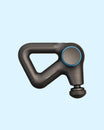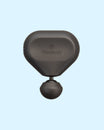Hisense U6N vs U7N: 4 Key Aspects Compared
By Naila Syifa
Updated August 2024

Hisense U6N and U7N are some of the latest mini-LED ULED TVs from Hisense, offering impressive features and performance at competitive prices. Let's look at how both TVs compare and which one might be the better choice for your specific needs!
Key Takeaways
Hisense U7N has a brighter 1500 nits display and a more immersive 2.1 channel audio compared to the U6N with 600 nits peak brightness and 2.0 channel audio. For gaming, the U7N is also the better choice with a higher 144Hz refresh rate and AMD FreeSync Premium Pro, while the U6N is limited to a 60Hz refresh rate, VRR, and ALLM.


Hisense U6N Mini-LED ULED 4K Google TV
2024 Entry-Level
✓ Mini-LED
✓ Peak Brightness 600 nits
✓ Hi-View Engine
✓ Game Mode Plus

Hisense U7N Mini-LED ULED 4K Google TV
2024 Mid-Range
✓ Mini-LED Pro
✓ Peak Brightness 1,500 nits
✓ Hi-View Engine Pro
✓ 144Hz Game Mode Pro
#1 Display

Hisense U7N
Hisense U7N has a better display with higher peak brightness compared to the U6N. Its Mini-LED Pro backlight technology delivers up to 1500 nits of peak brightness, significantly brighter than the 600 nits maximum peak brightness delivered by the Mini-LED backlight of the U6N.
The Hi-View Engine Pro chipset in the U7N also enables more advanced image processing capabilities compared to the standard Hi-View Engine in the U6N. With technologies like Dynamic Tone Mapping Pro, Face Detection, AI HDR Enhancement, and AI Detail Enhancement, the U7N delivers superior image quality and fidelity. Meanwhile, the U6N only supports Dynamic Tone Mapping and AI Detail Enhancement.
While both TVs support Dolby Vision and Filmmaker Mode for enhanced HDR and cinematic viewing experiences, the U7N has the edge with the IMAX Enhanced certification, providing a more immersive and true-to-source viewing experience.
Hisense U7N also supports more HDR formats, including Dolby Vision, HDR10, HDR10+, HLG, and Advanced HDR. Meanwhile, the U6N only supports the first four of these HDR formats - Dolby Vision, HDR10, HDR10+ and HLG.
#2 Audio

Hisense U7N
Hisense U7N comes with 2.1 channel audio compared to the 2.0 channel audio on the U6N. This means that while both TVs come with 2 speakers, the Hisense U7N offers an additional subwoofer for enhanced bass performance and a more immersive audio experience.
As a result, the U7N boasts a higher total audio output power of 40W compared to the 20W on the U6N, providing a more powerful and engaging sound quality.
Both TVs support Dolby Atmos, but the Hisense U7N also supports DTS:X, an audio codec that provides immersive, multi-dimensional audio. The DTS Virtual: X support on the Hisense U6N, on the other hand, only simulates the effect of multi-dimensional audio without true surround sound capabilities.
#3 Gaming Features

Hisense U6N
The collection of gaming features on the Hisense U6N is known as the 'Game Mode Plus', combining a 60Hz refresh rate, VRR, and auto low latency mode for an optimized gaming experience. However, these features still fall short of the more advanced gaming capabilities offered by the Hisense U7N.
'Game Mode Pro' in the U7N is far more comprehensive. It delivers variable refresh rate (VRR), auto low latency mode (ALLM), AMD FreeSync Premium Pro, and a higher 144Hz refresh rate for a more fluid and responsive gaming experience, perfect for action-packed games.
One common gaming feature that both TVs offer is a Game Bar, which provides quick access to various gaming settings and information.
#4 Connectivity

Hisense U6N
Hisense U7N supports the latest Wi-Fi 6E while the U6N only supports Wi-Fi 6, offering improved wireless performance and connectivity. However, this only matters if you have a Wi-Fi 6E-capable router.
In terms of ports, both TVs have 4 HDMI ports, but two of the HDMI ports in the U7N support 4K@144Hz, while all the four HDMI ports in the U6N only support up to 4K@60Hz.
Another difference is the USB port configuration. Hisense U6N offers two USB 2.0 ports, while the U7N has one USB 2.0 port and one USB 3.0 port, providing faster data transfer speeds.
Hisense U6N vs Hisense U7N
Final Thoughts

Hisense U7N
The Hisense U7N emerges as the more premium and feature-rich option in this comparison. With its superior display technology, advanced audio capabilities, and cutting-edge gaming features, the U7N offers a more immersive and responsive viewing and gaming experience.
While the U6N is a capable and competitively priced alternative, the U7N's higher peak brightness, IMAX Enhanced certification, and comprehensive gaming suite make it the more compelling choice for those seeking the best possible performance from a Hisense mini-LED ULED TV.
If you like to read more about Smart TVs, check out our other relevant guides here:
Hisense U7N vs U8N
Hisense U6K vs U7K
Hisense U7K vs U8K
Hisense U6K vs U6N
Hisense U7K vs U7N
Hisense U8K vs U8N
Hisense U7N vs U8K
Don't miss out on tech
Subscribe to our newsletter to stay up to date on the latest tech trends and guides on the best gadgets around.




